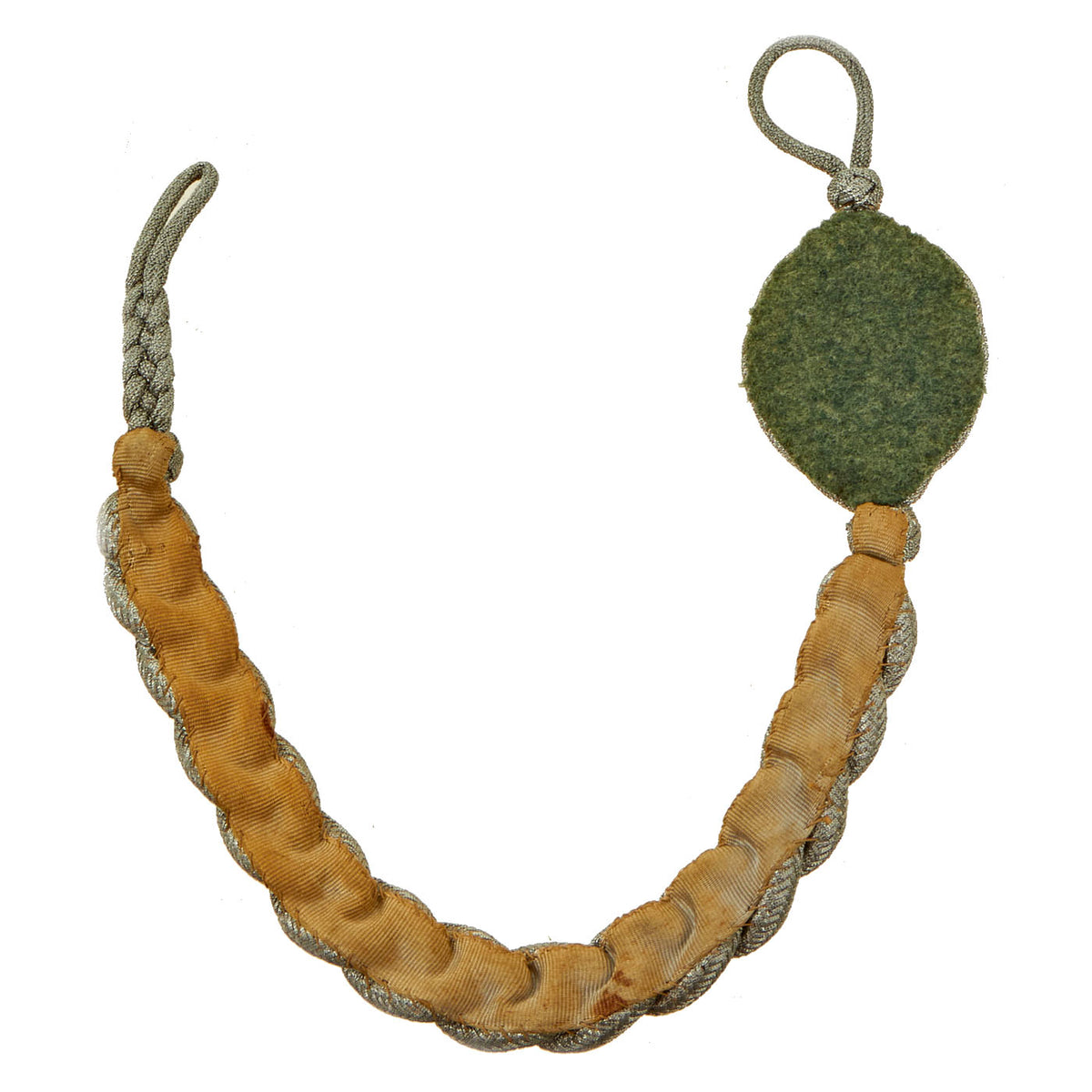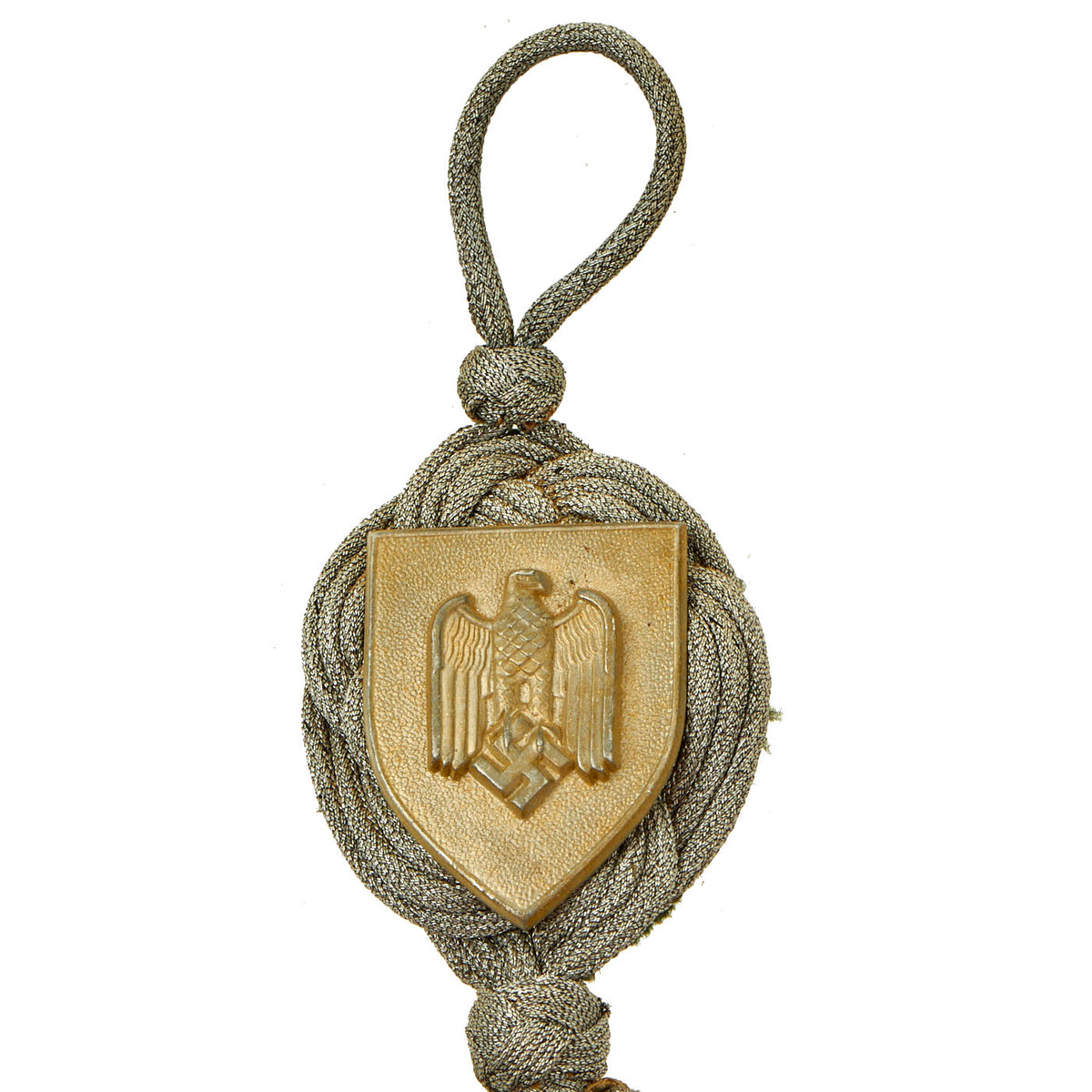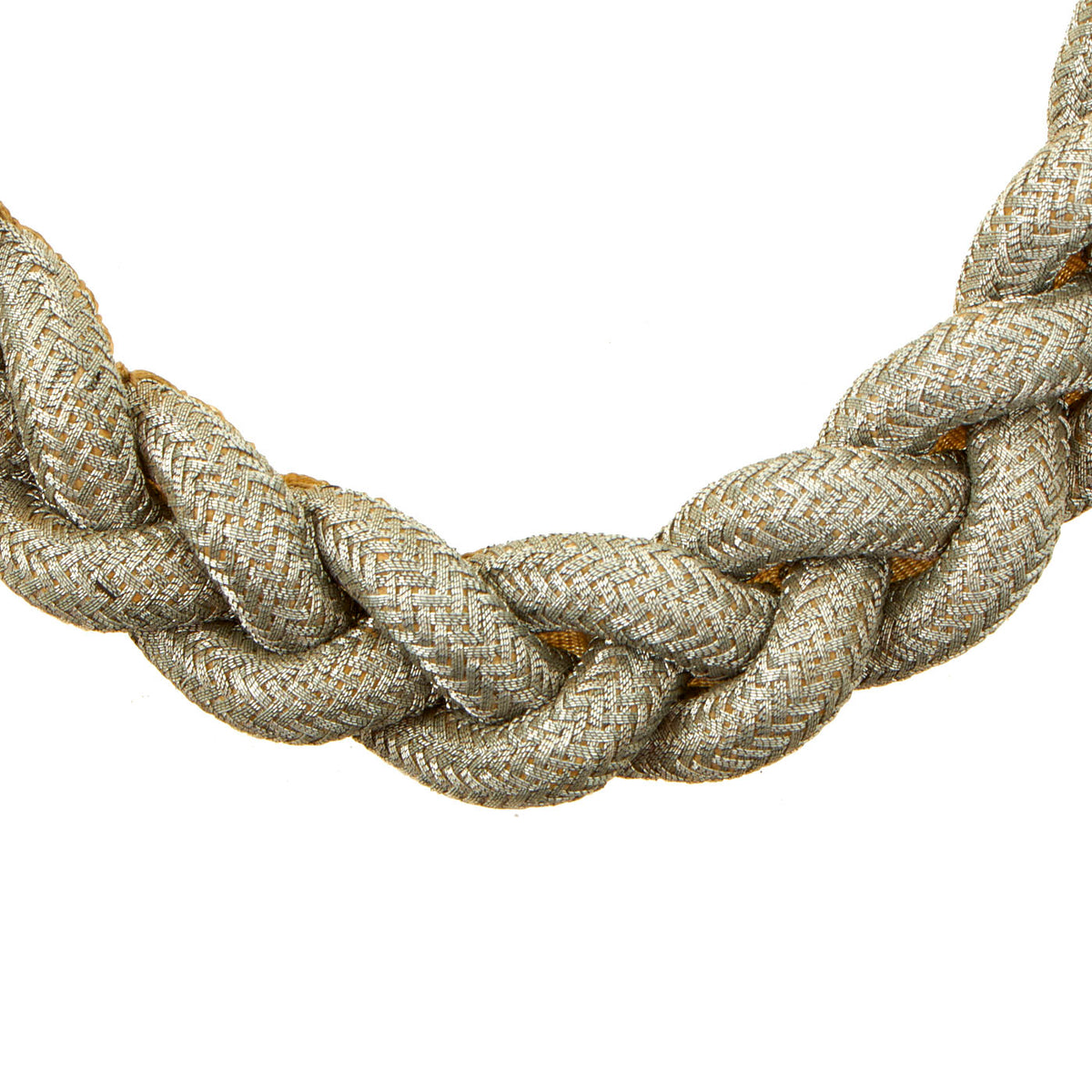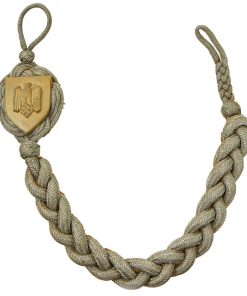Original German WWII 1st Pattern Grade I Heer Army Marksmanship Lanyard Original Items
$ 195,00 $ 78,00
Original Item: Only One Available. Like many other armies, the German armed forces spent a considerable amount of time training how to improve the accuracy of firing their small arms. An award was developed to recognize individuals who excelled in shooting. The Marksmanship lanyard was instituted on June 29th of 1936 through an executive order signed by AH. The shooting lanyard award was attached to the uniform by placing one of the loops on the button of the shoulder board and the other end on the button of the jacket.
The initial award was issued without any acorns, and every time the award was earned again, an additional acorn was added to the loop opposite to the shield. The award was authorized to be worn by personnel beneath the rank of officer. There were many additional grades, which resulted in different color badges and acorns.
The design of the shooting award consisted of a silver lanyard with thick bullion strings, with an overall length of about 16 inches. One end has a loop made of a single strand of string while the other end caps in an oval shape holding a badge. This section also has a loop on the end. The backs of the lanyards are sometimes lined with felt or silk.
This is a very nice 1st Pattern Heer / Army Marksmanship Lanyard, Grade1 (No Acorns). This earlier version has a simple Heer Shield Medallion on the top of the liner. The condition is very good, showing only light wear, and no major deterioration to the felt backing of the badge, while the rayon backing on the cord shows some light staining. The bullion portions are still bright and look great, with no fraying we can see.
A great WWII lanyard! Ready to display!
The German Armed Forces Badge for Weapons Proficiency (German: Schützenschnur) is a decoration of the Bundeswehr, the armed forces of the Federal Republic of Germany.
The decoration is awarded to German military personnel of all grades but is only allowed to be worn by enlisted members. The German armed forces regulations point out that “the Schützenschnur is a decoration for weapons proficiency for enlisted soldiers.” Officers can receive the award, although it is not currently authorized to be worn on their uniforms. Foreign military members also may be awarded the badge. The German military regulation on officers still applies, permitting only enlisted members to wear the badge.
The history of the Schützenschnur dates back to the Eighty Years’ War where Spanish troops were ordered to hang any Dutch person who carried a musket. Therefore Spanish musketeers began to carry ropes which were often carried over one shoulder. Awarding a cord as a decoration began in the early 18th century in Prussia under Frederick William I of Prussia. With the reorganization of the Prussian Army under Gerhard von Scharnhorst the Schützenschnur became an official military award.
The Reichswehr and later the Wehrmacht adapted the Schützenschnur as an award for proficiency in marksmanship. The award existed in 12 different levels with different versions for infantry and armored troops. In 1957 the Bundesgrenzschutz introduced the Schützenschnur. A similar decoration existed within the East German National People’s Army and the Border Troops of the German Democratic Republic.
Fast Shipping with Professional Packaging
Thanks to our longstanding association with UPS FedEx DHL, and other major international carriers, we are able to provide a range of shipping options. Our warehouse staff is expertly trained and will wrap your products according to our exact and precise specifications. Prior to shipping, your goods will be thoroughly examined and securely secured. We ship to thousands clients each day across multiple countries. This shows how we're dedicated to be the largest retailer on the internet. Warehouses and distribution centres can be located throughout Europe as well as the USA.
Note: Orders with more than one item will be assigned a processing date depending on the item.
Before shipping before shipping, we'll conduct a thorough inspection of the items you have ordered. Today, the majority of orders will be delivered within 48 hours. The delivery time will be between 3-7 days.
Returns
The stock is dynamic and we cannot completely manage it because multiple stakeholders are involved, including our factory and warehouse. So the actual stock may alter at any time. It's possible that you may not receive your order once the order has been made.
Our policy is valid for a period of 30 days. If you don't receive the product within 30 days, we are not able to issue a refund or an exchange.
You can only return an item if it is unused and in the same state as the day you received it. You must have the item in its original packaging.
Related products
Uncategorized
Uncategorized
Uncategorized
Uncategorized
Uncategorized
Uncategorized
Uncategorized
Uncategorized
Armored Burgonet Helmet & Polearm from Scottish Castle Leith Hall Circa 1700 Original Items
Uncategorized
Uncategorized
Uncategorized
Uncategorized
Uncategorized
Band of Brothers ORIGINAL GERMAN WWII Le. F.H. 18 10.5cm ARTILLERY PIECE Original Items
Uncategorized
Uncategorized
Uncategorized
Uncategorized
Uncategorized













































































